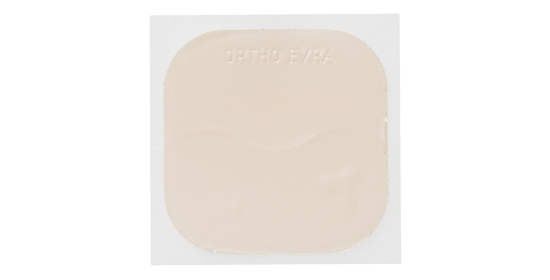WE’RE HERE TO GET THIS METHOD WORKING BETTER FOR YOU.
And if it still doesn’t feel right, we’ve got ideas for other methods. Just remember: If you change methods, make sure you’re protected during your switch.
THE PATCH KEEPS FALLING OFF
Patches fall off only about 5% of the time—so not very often. But if the patch falls off, don’t worry. You can stick the same patch back on if it’s been less than 24 hours and the patch is still sticky. Or, you can just apply a new patch. DO NOT use bandages, tape, or adhesive to make a non-sticky patch stick. The hormones that keep you from getting pregnant are mixed with the adhesive, so if it won’t stick, it’s also not going to be effective as birth control. Try this: Make sure you don’t use any “lotions or potions” (you know, powders, creams, medications, etc.) on your skin where you put the patch. Even moisturizing after the shower can interfere with the patch sticking. Even applying it in a steamy bathroom after your shower can result in moist skin and poor sticking power.
Still not working?
If it still keeps falling off, maybe you want to try a method that goes on the inside. Maybe
the implant, an
IUD, or
the ring.
I’M HAVING SOME SKIN IRRITATION.
Some people do experience irritation from the adhesive. Try this: You could try moving it to another recommended spot to see if that lessens the effect. You can also put a little over the counter cortisone cream on the irritated area and it will probably get better quickly. Or, if you’ve been moving it around, try keeping it in one spot.
Still not working?
If it doesn’t get any better, you might consider a method without adhesive, or a method you don’t have to change as frequently as the patch such as
the shot,
the implant, an
IUD, or
the ring.
I DON’T LIKE THE HORMONAL SIDE EFFECTS
Try this: First, give it a couple months to settle.
Still not working?
You may not get the same side effects with other hormonal methods. If things don’t get better with time, consider using the
ring,
shot,
IUD, or
implant.
